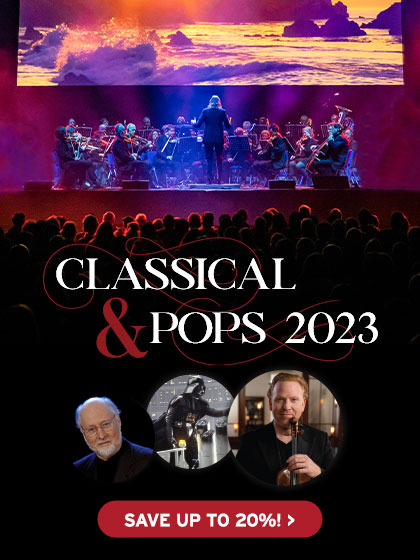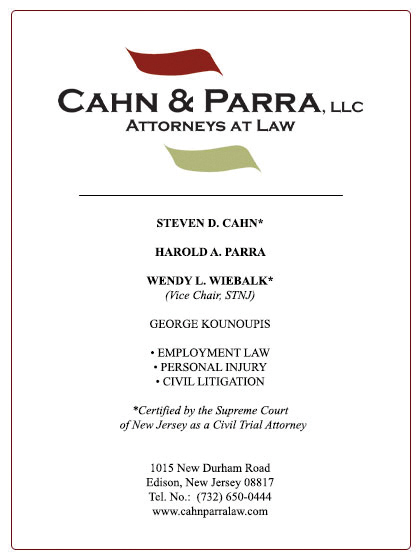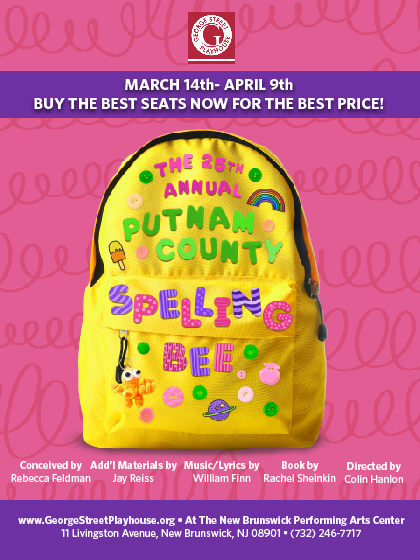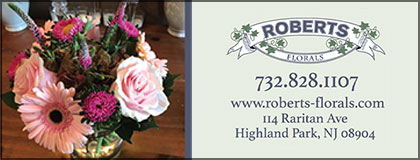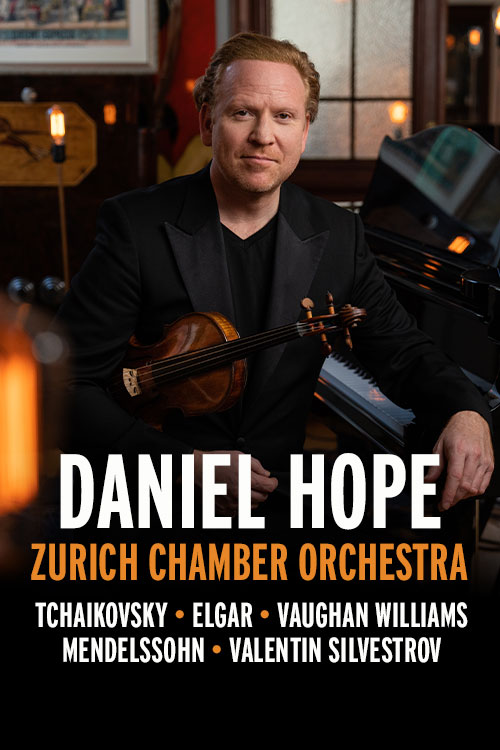
Zurich Chamber Orchestra
Daniel Hope, Solo Violin and Music Director
Willi Zimmermann, Concertmaster
Program
Edward Elgar (1857-1934)
Introduction and Allegro, Op. 47
Ralph Vaughan Williams (1872-1958)
The Lark Ascending
(arr. Adam Johnson)
Felix Mendelssohn (1809-47)
Violin Concerto in D minor MWV O3
—INTERMISSION—
Valentin Silvestrov (b.1937)
"Waltz of the Moment" from Silent Music
Piotr Il’yich Tchaikovsky (1840-93)
Serenade for Strings, Op. 48
*PROGRAM SUBJECT TO CHANGE*
Sheldon Artists LLC
www.sheldonartists.com
“The rare ability to connect sounds, or a series of sounds,” observed Nikolai-Rimsky-Korsakov in his influential Principles of Orchestration, “…renders [string] instruments far and away the best orchestral medium of melodic expression.” The sustaining power of the instruments and their potential for playing chords of up to four notes, he concluded, favors harmony as well as melody, “the string group…may be considered as a harmonic element particularly rich in resource.” Those attributes of melodic expression and harmonic richness ring true in this evening’s program, a collection of works for string orchestra in which infinite gradations of blend and balance, expressive nuance, textual clarity, and virtuosity are brought to bear on the development of striking musical ideas and arguments.
Elgar’s exceptional skills as an orchestrator were founded on his ability as a violinist. He proved a sufficiently competent player during his youth to secure freelance orchestral work and a regular post in William Stockley’s Band in the English industrial city of Birmingham. Elgar directed his practical knowledge of the instrument into the intricately detailed string writing of his mature works, often hallmarked by rich chordal sonorities and intricate polyphony. The Introduction and Allegro, first performed in 1905 by the recently established London Symphony Orchestra, emulates the character of the Baroque concerto grosso in its dialogue between a string quartet and a larger group of strings.
Elgar makes heavy technical demands on the work’s players; moreover, he fills his score with a multitude of expression marks, dynamic shadings and performance indications that require sustained emotional engagement with the music: this is not a work of half-measures. There is a tension here between virtuoso display and introspection, most likely rooted in the personal life of a composer already feted as one of the great adornments of Edwardian England’s cultural life yet one troubled by episodes of depression and self-doubt. The undermining drag of anxiety runs through the contrasting thematic ideas set out in the Introduction and explored more fully in the Allegro. Elgar recalled how the Introduction’s exquisite solo viola tune was inspired by memories of snatches of folksong heard in the distance while on holiday in Wales. The Allegro’s closing section includes what the composer described as “a devil of a fugue,” the demonic intensity of which gives way to a rapid tour through the work’s main themes, an impassioned restatement of the Introduction’s opening and a majestic recall of the ‘Welsh’ theme.
Ralph Vaughan Williams retained a lifelong empathy for his home county of Gloucestershire and the countryside of southern England, immortalized by generations of local authors and poets. The Lark Ascending was conceived as a “Romance” for violin and piano in 1914. Vaughan Williams was inspired to compose the work by the soaring imagery of George Meredith’s poem about the skylark whose “press of hurried notes that run/ So fleet they scarce are more than one.” The old country and its population, already strained by a prolonged recession in agriculture, were marked forever by the First World War, during which the composer served as a medical orderly and artillery officer. After its survivors returned to civilian life, Vaughan Williams created a version of his score for violin and orchestra. Marie Hall, who had received violin lessons from Elgar during her childhood, was soloist in the work’s first performance at Queen’s Hall in London in 1921. It is performed today in a fine recent arrangement for solo violin, string quartet, string orchestra and triangle by Adam Johnson.
Felix Mendelssohn began studying composition around the time of his tenth birthday with Karl Friedrich Zelter, a devotee of the music of J.S. Bach, and violin with the Prussian court violinist C.W. Henning. The supremely talented boy put his lessons in counterpoint and string playing to the test in a dozen symphonies for strings and the Violin Concerto in D minor (c.1822), the latter notably free from the ostentatious virtuosity cultivated by such contemporary violin-composers as Viotti and Kreutzer. Mendelssohn promotes the dialogue between soloist and orchestra in his D-minor Concerto, established in the opening Allegro’s eloquent interplay of thematic ideas and celebrated in its vivacious rondo finale. The work’s introduction echoes the style of a grand Baroque aria, while the slow movement begins with a graceful triple-time melody reminiscent of Mozart. Although written for Eduard Rietz, Mendelssohn’s second violin teacher, the concerto remained unperformed until the piece was shown to Yehudi Menuhin in 1951 and premiered by him at Carnegie Hall the following year.
Valentin Silvestrov offers a glimpse of the sublime in his Stille Musik (Silent Music). The work, an exquisite meditation on change and impermanence by Ukraine’s foremost contemporary composer, was first performed in Kyiv in 2002. It begins with a wistful “Waltz of the Moment” in which clock time melts into the timelessness of the imagination and unfolds with a delicate “Evening Serenade” and its equally gentle companion, “Moments of the Serenade.” Silvestrov’s score, marked with myriad adjustments of pulse and minute contrasts of low-level dynamics, carries melodies that seem to have existed forever, original yet somehow familiar.
In early September 1880, Tchaikovsky completed the final revision of his fantasy overture Romeo and Juliet and immediately felt unwell. His mood lifted soon after when he began work on what he thought were ideas for a new symphony. He reported to his brother that he had ‘started to write something’; by the third week of October, that something had become the Serenade for Strings, essentially a string quintet for multiple instruments. The clarity of its themes and logic of their development were rare in the output of a composer who preferred the juxtaposition of contrasting melodic ideas, often in quick succession.
The Serenade opens with a “Piece in sonatina form,” from which the composer deliberately omits the conventional transition and development sections of sonata form. He reinstates both in the work’s finale, creating a sonata movement based on a haunting Russian theme. Tchaikovsky builds the second movement’s intoxicating waltz out of a rising scale figure from early in the Sonatina and recycles the same material in the introduction to the subsequent Élégie. “I love this Serenade terribly,” wrote the composer to his publisher in November 1880, “and fervently hope that it might soon see the light of day.” His wish was soon granted: by the end of the decade, the Serenade had entered the international repertoire where it has remained ever since.
Notes by Andrew Stewart
Zurich Chamber Orchestra
Daniel Hope – Music Director
VIOLIN
Willi Zimmermann
(Concertmaster)
Donat Nussbaumer
Jana Karsko
Kio Seiler
Tanja Sonc
Christina-Maria Moser
VIOLIN
Daria Zappa
(Principal Second Violin)
Silviya Savova-Hartkamp
Anna Tchinaeva
Simon Wiener
Arlette Meier-Hock
VIOLA
Ryszard Groblewski
(Principal Viola)
Frauke Tometten Molino
Manuel Nägeli
Pierre Tissonnier
CELLO
Nicola Mosca
(Principal Cello)
Anna Tyka Nyffenegger
Silvia Rohner Geiser
BASS
Seon-Deok Baik
(Principal Bass)
Ivo Schmid

Zurich Chamber Orchestra
Lena Catharina Schneider, Artistic Director
Helene Eller, Managing Director
Alexander Ponet, Project Manager
Matthias Kägi, Stage Manager
Daniel Engstfeld, General Management for Daniel Hope & International Touring Advisor
Sheldon Artists LLC
R. Douglas Sheldon, Managing Partner
Karen Kloster, Tour Coordinator
Jonathan Wintringham, Associate Manager & Marketing
Renee O'Banks, Tour Manager
Maestro! Tour Management, Air and Hotels
| info@sheldonartists.com www.sheldonartists.com |
 |



